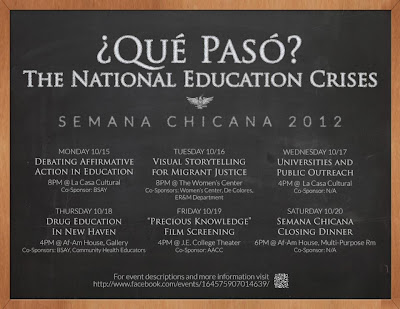Wilson details immigrant experience
Wilson details immigrant experience
Wednesday, October 17, 2012
Chilean artist Liliana Wilson is able to explain her life’s events through her paintings.
On Tuesday, Wilson presented a sample of her artwork — about 50 paintings and explanations of the events surrounding them — at the Yale Women’s Center to a group of roughly twenty-five people. Inspired by her childhood in Chile and eventual move to the United States, she incorporates the struggles of Latin Americans and immigrants throughout her work.
MeChA, a La Casa student group that advocates for Chicano unity, hosted the event as part of a week-long series on education. The organization, part of a larger national movement, has mentored high school students and worked with New Haven-based unions to advocate for the local Latino community.
MeChA President Diana Enriquez said the group has placed more emphasis on cultural events in recent years. Wilson’s art, she said, conveys the immigration experience in a more powerful way than words alone.
“The rhetoric around the immigration experience is dehumanizing right now,” said Natalia Thompson ’13, the event’s organizer.
Thompson added that Wilson puts immigrants’ stories in perspective, “and reminds us that they’re families and they’re lovers.”
But Wilson said she does not consider herself an activist.
“I’m trying to connect and communicate on a very deep level with people,” Wilson said. “More than education, I want people to communicate with each other.”
In her lecture, she referenced a chronological PowerPoint presentation to explain her thinking behind each piece of art. One piece, “El Estadio Nacional,” depicts a mass of people in a stadium waiting for their death at the hands of the Chilean government. Her final piece, “I belong here,” showed a girl sitting and holding a flag that reads “inmigrante,” a testament to the universality of the human experience.
At eight years old, Wilson began to draw while bed-ridden after a car accident. Since then, she has identified as an artist. In 1973, when Wilson was a law school student, a military junta overthrew the government and began a 17-year dictatorship. She said she began drawing everything she saw, not shying away from the horrors of death and torture.
“Suddenly habeus corpus didn’t mean anything anymore,” she said.
When she immigrated to Texas in 1977, she burned all of her work for fear of government persecution. Though Wilson still depicts subjects from her life in Chile, the paintings she created while living there are largely inaccessible.
Since arriving to the United States, Wilson has focused on the immigrant experience, though she said that none of her work has explicit political motivations. Enriquez, the MeChA president, said that many Latin American artists use surreal elements to depict the violence and trauma around them.
Despite these darker themes, Wilson still emphasizes the aesthetic of each piece and hopes to make it beautiful in its own way. She said that while she depicts the hard lives of forgotten immigrants, “in the end I think that most people are good. And if you just show them the problem, they’ll probably want to help.”
Katie Aragon ’14, who attended the event, said that Wilson’s work is especially powerful because of her emphasis on both a storytelling narrative and a pleasing aesthetic.
“Her paintings tell a human story that is so important to hear and to see,” she said.
While much of Wilson’s work was inspired by particular historical events, Deena Tumeh ’13 said she still finds it to be relevant today. Tumeh said that Wilson’s individual explanation of each piece made the experience more powerful than a traditional exhibit setting.
A compilation of Wilson’s work will be published by Texas A&M University press, accompanied by essays about her art, in the next year.

